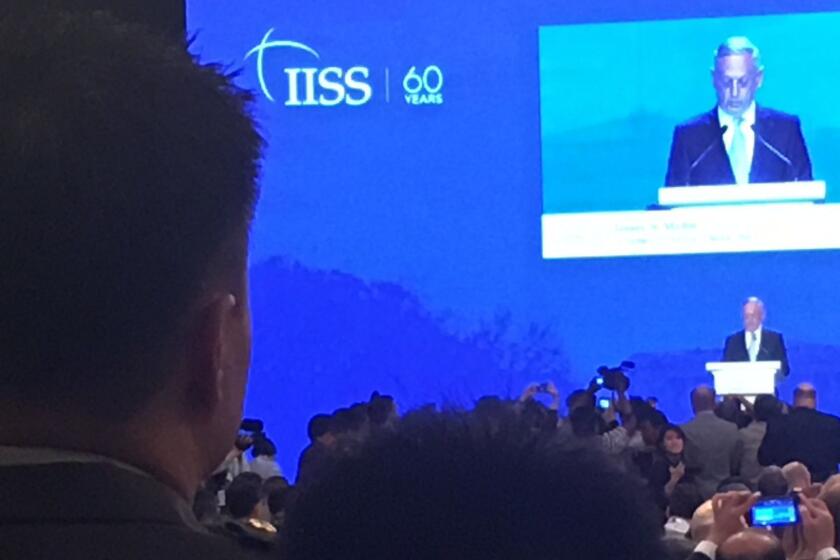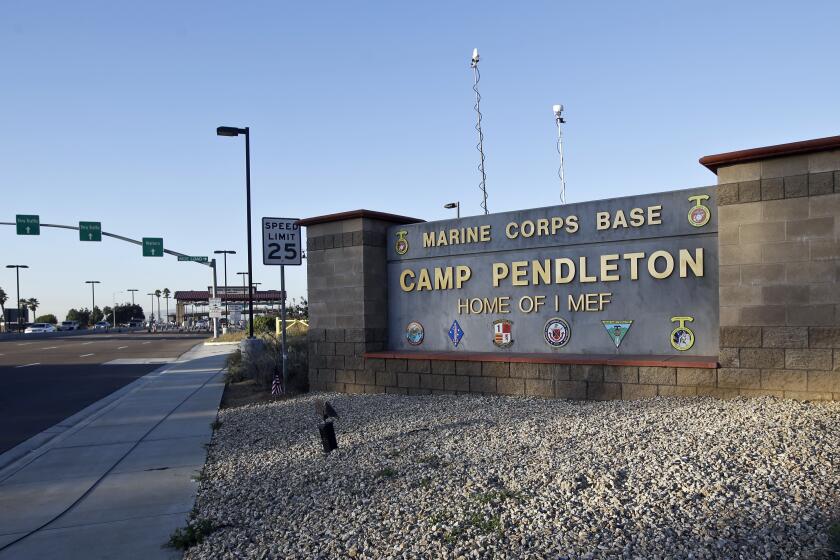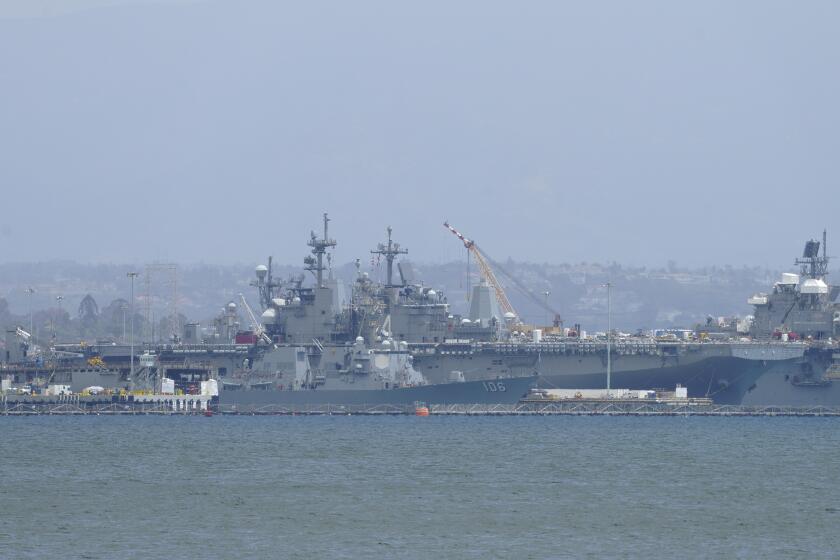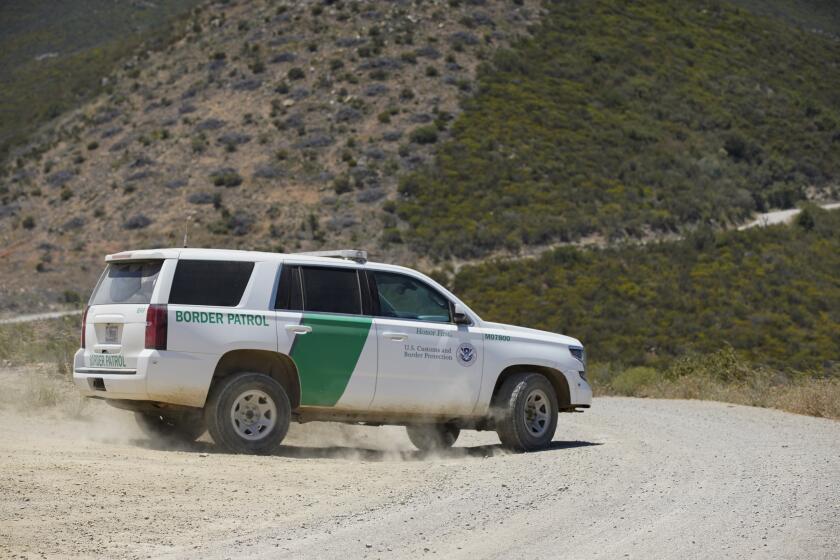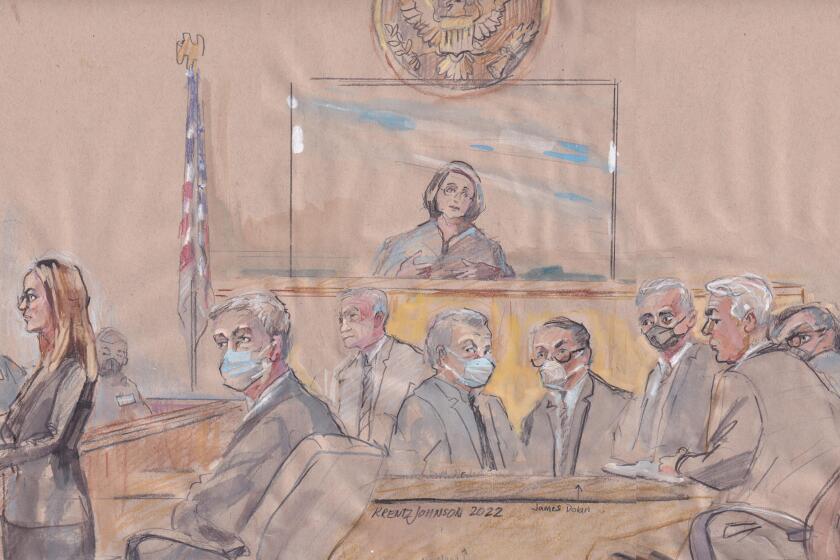Navy cultivating more ruthless, nimble, clever war tacticians
ABOARD THE THEODORE ROOSEVELT — It’s like shooting a bullet with a bullet.
On Wednesday, the flattop’s tactical action officer, Navy Lt. Jeff Miller, and his bustling crew in the bowels of the warship identified, tracked and then blew to bits an incoming missile several miles before it reached the aircraft carrier and its group of accompanying ships.
But the fellow lieutenant who basked in the applause within the battle station wasn’t a member of the Roosevelt. He was Ben Olivas, a warfare tactics instructor — a “Witty,” as they’re called in the Navy — from the San Diego-based Naval Surface and Mine Warfighting Development Center.
During the past one and a half years, Olivas and 131 other elite surface-warfare officers have graduated from the course, which is modeled in part on the Navy’s Top Gun program for pilots. Now they’re mentoring the Navy’s overall fleet on the most cutting-edge tactics and doctrine — rules they’re rewriting from combat simulations conducted at sea like last week’s exercise involving the Theodore Roosevelt off the Southern California coastline.
“(Olivas) was helping me with everything that was going to happen on the ship. It’s like distance learning,” Miller said. “I could be there with him, so every question I had going through the process I bounced off Ben. He got back to me about setting up my missile engagements, the doctrine, basically all my technicals. He was the go-to guy.”
Even in the dim light of a warship at night, Olivas can’t be missed because of the integrated air and missile defense patch glowing scarlet against his pale blue camouflage uniform — a badge that marks him as the Witty on deck. Junior officers from the amphibious, anti-submarine and anti-surface specialties also can earn patches, and a similar course is being developed for mine-warfare specialists.
Olivas’ patch signals a broader cultural change within the surface-warfare fleet as the ethos of “distributed lethality” takes hold and crews are expected to become clever, nimble and ruthless practitioners of the science of war against potential rising maritime enemies such as China and Russia. Although they’re young officers, Witties like Olivas are heralds of tactical innovation — smart, charismatic and driven teachers who are supposed to make everyone around them better, even captains and admirals.
“For me, it has a dual meaning,” said Olivas, pointing to his patch. “When I went off to school, my mom died. I mean, I left the day she died. She told me, ‘Go.’ I went and six months later when I got my patch, it represented a piece of her. When I look at it, it kind of reminds me of her.
“… This has probably been the hardest and the best thing the Navy has done for the surface community,” he added. “We’ve taken a lot from the aviation community because they’re the ones who first had (Witties), but I’ll tell you that this school was demanding. There was no mercy involved. And if you failed, they had no qualms about reassigning you to do something else.”
The Naval Surface and Mine Warfighting Development Center estimates that 80 percent of the Navy’s eligible surface-warfare officers wouldn’t qualify for the Witties program. Staffers screen out 30 percent of applicants, and 15 percent of those who make it in eventually wash out during the six-month course.
Students who last are encouraged to specialize in individual weapons or whole systems, often spending weeks with a manufacturer’s top engineers to learn everything possible about how a weapon can be used tactically against an enemy — before that weapon gets tested in the naval fleet.
It’s a bicoastal effort. Sea-combat and mine-warfare courses occur in California, while integrated-air, missile-defense and amphibious-operations classes take place in Virginia.
The center’s San Diego-based operations officer, Cmdr. Jeffrey Heames, said Witties give “multiple layers of payoff” to the Navy. Not only do the Witties get advanced training that radiates out through the fleet, they also go on to be department heads aboard ships, creating a “transformational cultural shift” that can be sustained for years, he said.
Graduates of the program are expected to magnify the combat power of the Navy’s warships, slashing waste caused by bad doctrine and slack training. The plan is to put a Witty aboard every large surface vessel within a few years.
Along with the two RIM-116 Rolling Airframe Missiles fired by the Roosevelt about 100 miles off the Southern California coast last week, a team of Witties helped oversee similar engagements with the AEGIS cruisers Lake Erie and Bunker Hill and the destroyers Preble, Higgins, Sampson and Halsey using Surface Missile-2 Block IIIA missiles, a five-inch gun and other weapons.
Witties like Lt. Cmdr. Derek Rader, 38, then take the data from such tests to refine Navy doctrine. Last year, the center wrote or revised 23 tactical publications — a nearly 360 percent increase over the preceding six years.
“The data, we feed it not only back to the carrier strike group but also the doctrine and tactics staff to validate that what they put on paper actually executes in the real world with real combat systems and real weapons,” Rader said. “If there are deficiencies along the line, we look at the weapon itself, the ship, the training, the operator or the doctrine.”
Capt. Joe Cahill, widely considered to be one of the finest minds in the Navy and a past director of advanced tactics at the center, said: “When we have these experts on board, these astute tacticians, we want to get everything that’s in their brains into our heads. That’s really what the last week has meant for me — very insightful, almost college-level moments of education.”
Cahill also said the Witties don’t bring check-the-box instruction, but instead force crews to quickly respond to challenging events based on potential real-world sea battles. After each training session, they review footage — much like football coaches breaking down a game with the their team — to figure out what went right and who failed. And that should trigger accountability that leads to better officers and sailors.
“I, in my mind, am a very skeptical individual. But they now have a level of credibility with me that when I now see a patch-wearer, he immediately has credibility with me,” Cahill said. “That officer, when she comes into my ward room and I introduce her as a Witty and as a patch, I expect that she will bring and raise the level of expertise. I demand that my ward room listen, participate and learn.”
With 13 Witties aboard the Roosevelt Carrier Strike Group last week, that represented about 10 percent of the center’s graduates.
Still a tiny portion of the surface fleet, the patch-wearing Witties have taken hold in popular culture. The popular video game “Call of Duty: Infinite Warfare” features characters who wear the patch. And on page 607 of “Commander in Chief” — a novel in the Tom Clancy franchise — readers encounter Damon Hart, a fictional Witty modeled after a real officer, Lt. Damon Goodrich-Houska.
Goodrich-Houska was part of the “dirty dozen” of anti-submarine/anti-surface warfare specialists to graduate from the center. He’s currently on an intensive, 18-month tour with the Navy fleet spreading the gospel of advanced tactics. At the center, he focused on revamping training, tactics and procedures for sonar.
“I’ve gotten to fire a lot of torpedoes and worked with some real cool sonar stuff,” he said. “But the biggest thing is when we do these training events. We’re ramping up. We’re doing the crawl, walk, run thing — basic to intermediate to advanced scenarios — and seeing the crews and the watch standers continue to improve.
“We start out leading the debriefs with some participation, but by the end, their team is leading it and we’re just sitting back, maybe making a comment here or there. They take the mantle from us and go forward.”
Military Videos


D-Day paratrooper from Coronado jumps again in France — at age 96
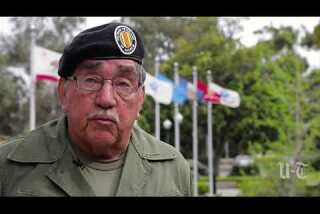
Remembering war's fallen, one name at a time
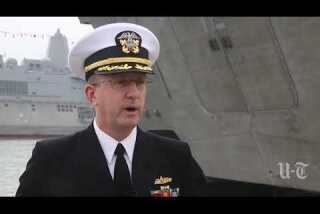
Video: Navy's newest vessel sails into San Diego and a new future in surface warfare
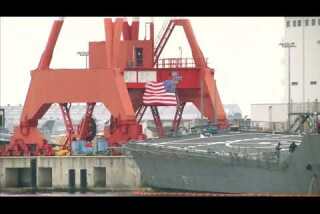
Video: U.S. Navy files homicide charges over warship collisions

Stopping Marine hazing

Video: U.S. Navy Air Crew Grounded After Creating Vulgar Sky Drawing
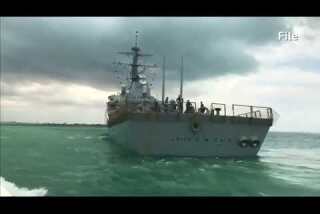
Navy says Asia Pacific ship collisions were avoidable

Hundreds of recruits get sick at Marine boot camp
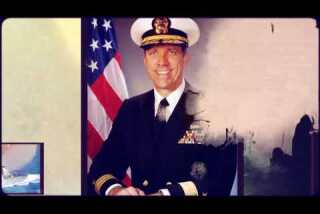
Cutler Dawson Talks Navy Federal
Get Essential San Diego, weekday mornings
Get top headlines from the Union-Tribune in your inbox weekday mornings, including top news, local, sports, business, entertainment and opinion.
You may occasionally receive promotional content from the San Diego Union-Tribune.

